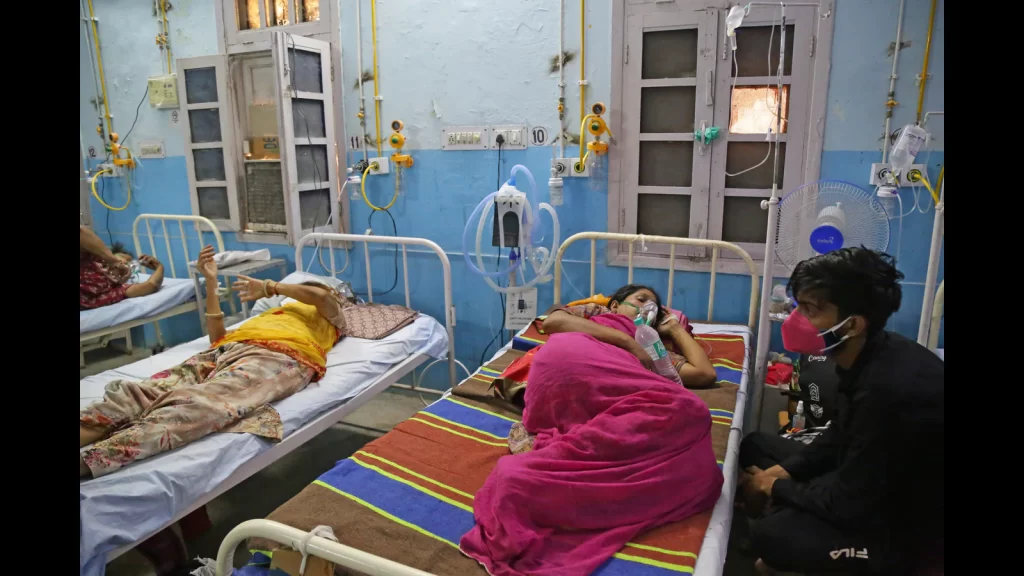Revolutionising health insurance – Hindustan Times

The National Health Policy (NHP) of 2017 listed among its foremost objectives, the achievement of universal health coverage. Achieving a significant reduction in out-of-pocket expenditure due to health care costs was another key objective. Ayushman Bharat Pradhan Mantri – Jan Arogya Yojana (AB PM-JAY) was conceived out of this vision to move towards a more holistic approach to health care service delivery.
AB PM-JAY was not the nation’s first tryst with health care insurance. Due credit must be given to predecessor schemes such as Rashtriya Swasthya Bima Yojana, and state schemes such as Aarogyasri in Andhra Pradesh and Jeevandayee Yojana in Maharashtra. However, in terms of scope and scale, AB PM-JAY has dwarfed all existing health care insurance interventions. For the first time, we had a health insurance scheme with a pan-India presence.
As of April 1, AB PM-JAY, in alliance with state health schemes, covers a beneficiary base of more than 140 million families (700 million individuals). Almost 180 million individuals have been identified under the scheme and provided with an Ayushman card. AB PM-JAY has facilitated almost 32.8 million hospitalisations, providing treatment worth over ₹37,600 crore. All this has been achieved in a little over 3.5 years and amid the greatest global pandemic in recent times.
As I reflect on the trajectory of AB PM-JAY, the scheme’s success is mounted on the vision of the Prime Minister and the versatile policy framework conceptualised by the Cabinet. This policy framework crystallised the six guiding principles behind AB PM-JAY.
First, comprehensive health care benefits. AB PM-JAY was launched with 1,393 treatment packages covering treatment for various medical specialties such as oncology, neurosurgery, cardiovascular surgery up to ₹5 lakh per beneficiary family. This was subsequently increased to 1,670 treatment packages. The benefits under AB PM-JAY were comprehensive, covering pre- and post-hospitalisation expenses. Additionally, all pre-existing conditions were covered from day one of the policy period. The portability feature empowered beneficiaries from the remotest villages to seek treatment at the most advanced health care facilities.
Two, converged and integrated within the health care ecosystem. Under AB PM-JAY, considerable flexibility was provided to states and Union Territories (UTs) in choosing their mode of implementation, beneficiary database and network of hospitals. Further, National Health Authority (NHA) diligently pursued convergence with existing state-based schemes. Currently, AB PM-JAY is implemented in alliance with more than 25 state-specific schemes. Additionally, district implementation units were set up in over 600 districts to ensure the administrative reach of AB PM-JAY to the beneficiary’s doorstep.
Three, ensuring equity in access to health care services. Renewed impetus was given to extending benefits to marginalised sections covered under the Socio-Economic Caste Census database. AB PM-JAY adopted an enlightened approach towards ensuring gender-specific equity. The erstwhile RSBY scheme mandated a limit of five family members, which led to the exclusion of female members, especially the girl child. However, under AB PM-JAY, this capping was done away with. Women account for approximately 50% of Ayushman cards generated using the NHA IT platform and 47% of authorised hospital admissions.
Four, robust, scalable, and interoperable technology platforms. One of the problems that afflicted past efforts was fragmented IT systems. Therefore, under AB PM-JAY, a highly versatile technology platform was developed to aid in beneficiary identification, transaction management and hospital empanelment. This award-winning IT platform is active across 26 states and UTs. As a result, state health authorities (SHAs) and NHA have gained granular insights into the scheme to aid in evidence-based policymaking and course correction, where required.
Five, public and private partnership. Under AB PM-JAY, both public and private hospitals have been empanelled for providing health care services. The participation of the private sector has increased avenues for the scheme’s beneficiaries to seek treatment and concurrently reduced the burden on tertiary care facilities in the public sector. Under AB PM-JAY, it was ensured that public hospitals would be reimbursed equally for their services and at the same rates as that of private hospitals. This has also supported public sector hospitals and created a pool of untied funds that could be sustainably invested in infrastructure and human resources. The complementary role of the public and private sector hospitals has been vital in ensuring that the scheme implementation proceeded seamlessly.
Six, Aapke Dwar Ayushman, or the frontline grassroots mobilisation system. A key initiative that I greenlit upon assuming charge of NHA was Aapke Dwar Ayushman, under which a grassroots network of frontline health care workers, panchayat officials and village-based digital entrepreneurs was used to undertake door-to-door mobilisation of beneficiaries across communities. Special night camps were set up for daily wagers. These efforts translated into more than 47 million Ayushman cards being generated since January 2021, an increase of 55%. NHA is launching Aapke Dwar Ayushman with renewed vigour. This time we are focusing on states such as Assam, Bihar, Gujarat and Uttar Pradesh.
I would also like to take this opportunity to give credit to the entire AB PM-JAY ecosystem consisting of NHA, SHAs, district implementation units, implementation support agencies, Pradhan Mantri Arogya Mitras, frontline health care workers, Ayushman card creators from partner agencies such as Common Services Centre and UTI Infrastructure Technology and Services Limited, for their tireless support in making AB PM-JAY such a grand success. Going forward, much more needs to be done to help the scheme realise its full potential.
RS Sharma is chief executive officer, National Health Authority
The views expressed are personal

